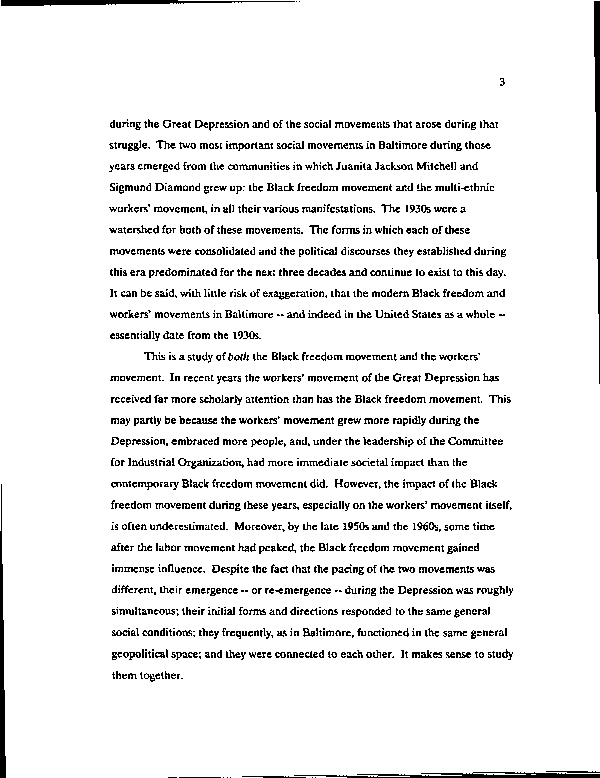|
during the Great Depression and of the social movements that arose during that
struggle. The two most important social movements in Baltimore during those
years emerged from the communities in which Juanita Jackson Mitchell and
Sigmund Diamond grew up: the Black freedom movement ar.d the multi-ethnic
workers' movement, in all their various manifestations. The 1930s were a
watershed for both of these movements. The forms in which each of these
movements were consolidated and the political discourses they established during
this era predominated for the next three decades and continue to exist to this day.
It can be said, with little risk of exaggeration, that the modern Black freedom and
workers' movements in Baltimore — and indeed in the United States as a whole —
essentially date from the 1930s.
This is a study of both the Black freedom movement and the workers'
movement. In recent years the workers' movement of the Great Depression has
received far more scholarly attention than has the Black freedom movement. This
may partly be because the workers' movement grew more rapidly during the
Depression, embraced more people, and, under the leadership of the Committee
for Industrial Organization, had more immediate societal impact than the
contemporary Black freedom movement did. However, the impact of the Black
freedom movement during these years, especially on the workers' movement itself,
is often underestimated. Moreover, by the late 1950s and the 1960s, some time
after the labor movement had peaked, the Black freedom movement gained
immense influence. Despite the fact that the pacing of the two movements was
different, their emergence — or re-emergence — during the Depression was roughly
simultaneous; their initial forms and directions responded to the same general
social conditions; they frequently, as in Baltimore, functioned in the same general
geopolitical space; and they were connected to each other. It makes sense to study
them together.
|

